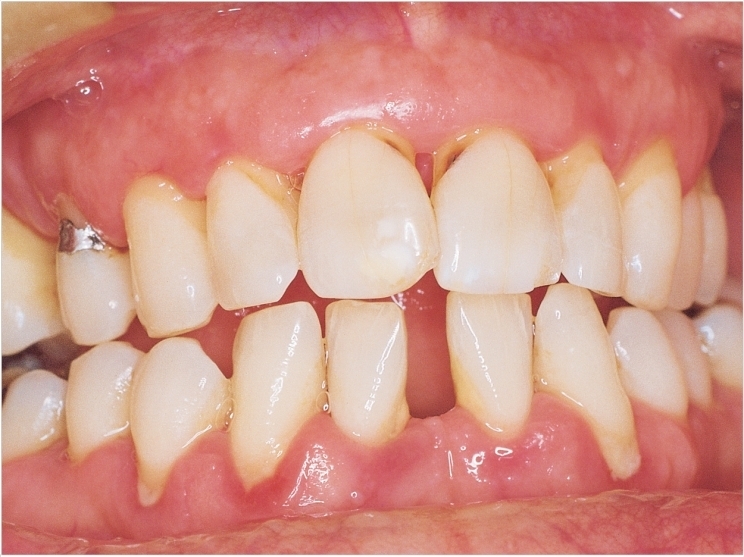
Chédiak-Higashi syndrome (CHS) has been associated with aggressive periodontitis. However, an international research team has found that not all CHS patients exhibit such disease. Also, periodontitis susceptibility in CHS is mainly mediated by hematopoietic cells, which give rise to immune cells and other blood cells. In fact, classic CHS patients who had a bone marrow transplant early in life and atypical CHS patients are less susceptible to aggressive periodontitis compared to classic CHS patients who never receive bone marrow transplantation.
Caused by mutations in the lysomal trafficking regulator gene (LYST), which codes for a protein that helps with protein packaging and transport within cells, CHS is a rare genetic disorder characterized by a type of albinism that affects the eyes, skin, and hair. It also is associated with abnormal bleeding, recurrent bacterial infections, and impaired immune and neurological function. Previous research has suggested that LYST mutations affect toll-like receptors (TLRs), leading to frequent infections. TLRs sense bacterial threats and help generate a response.
“This study provides a better understanding of the molecular mechanisms governing the periodontal disease process and perhaps other situations in which the patients have altered TLRs and immune cell dysfunction,” said Jocelyne Feine, editor of JDR Clinical & Translational Research, which published the study. “This is also the first study to report the periodontal findings in atypical CHS patients, and it raised new hypotheses for future research, plus the need for personalized intervention strategies tailored to an individual’s host response.”
The study investigated the periodontal status of patients with classic or more severe CHS and patients with atypical or more moderate CHS. It also examined the effect of LYST mutations on the expression of 2 members of the TLR family, TLR-2 and TLR-4, and on the immune-regulating functions of gingival fibroblasts in CHS patients.
Gingival fibroblasts help form the tooth-supporting gum tissue. They secrete cytokines and other molecules that facilitate cell-to-cell communication. As a standard of care, all patients in the study with classic CHS had undergone bone marrow transplantation, while none of the atypical patients had received it.
In contrast to aged-matched healthy individuals, the classic and atypical CHS patients both exhibited mild chronic periodontitis with no evidence of gingival ulceration, severe tooth mobility, or premature exfoliation of teeth. Compared to gingival fibroblasts from healthy donors, gingival fibroblasts obtained from classic and atypical CHS patients displayed higher baseline expression of TLR-2 and lower baseline expression of TLR-4.
When treated with extract from Fusobacterium nucleatum, a bacterium that is associated with periodontal disease, gingival fibroblasts from classic and atypical CHS patients failed to increase production of TLR-2 and TLR-4 compared to the untreated cells or cells from healthy patients. Also, when exposed to F nucleatum extract, gingival fibroblast cells from patients with atypical CHS expressed increased cytokine production compared to gingival fibroblast cells from classic CHS patients.
These results suggest that LYST mutations may affect TLR-2 and TLR-4 expression and function, leading to a dysregulated immunoinflammatory response that influences the periodontal disease phenotype noted in CHS patients. The researchers believe that this study could be used to create awareness among clinicians that not all CHS patients exhibit historically reported aggressive periodontitis.
Related Articles
Different Microbiomes May Cause Gingivitis and Periodontitis
Cytokines May Tie Obesity to Periodontal Disease
Protein That Halts Gum Inflammation Also May Improve Stem Cell Transplants



